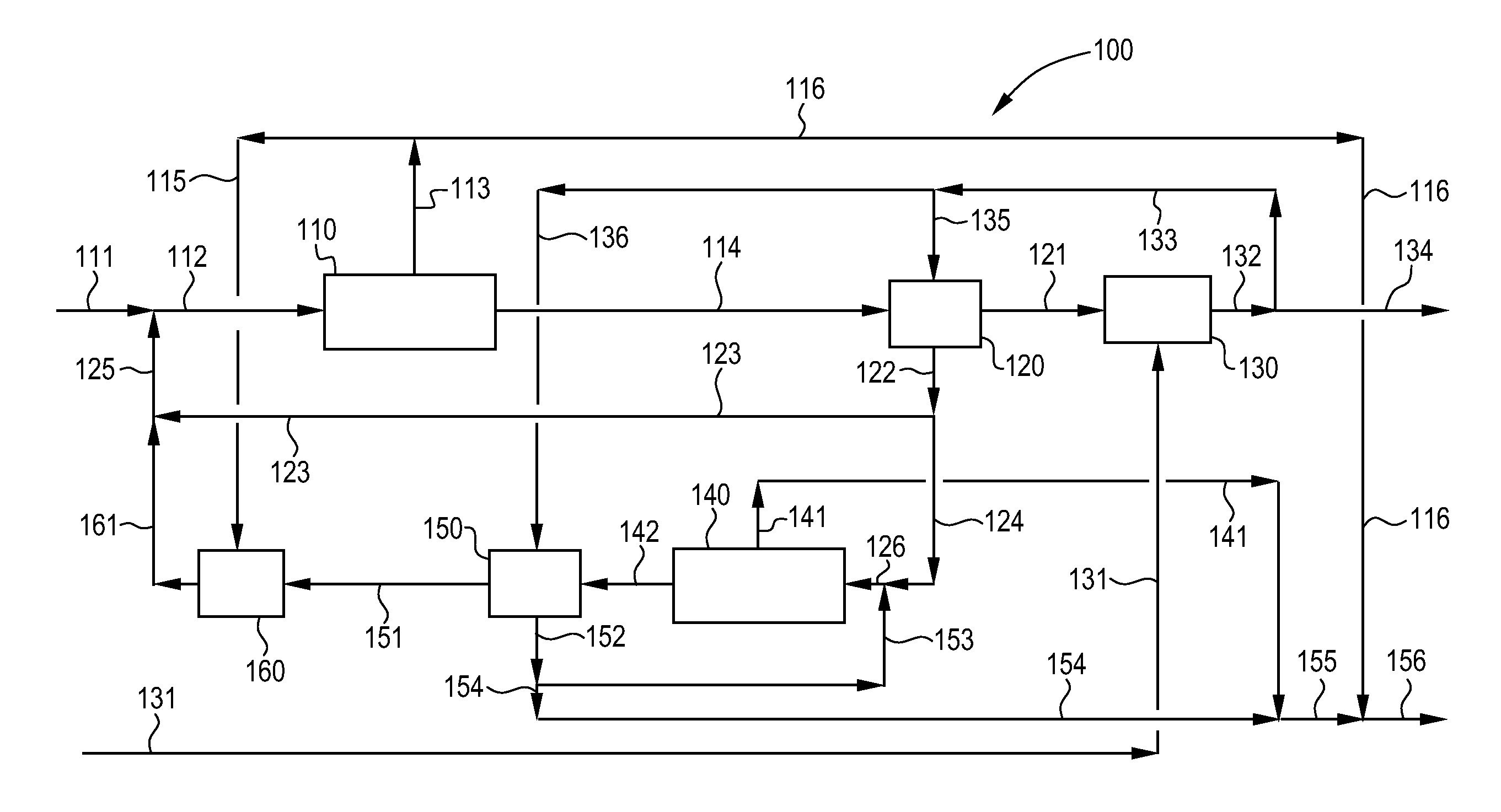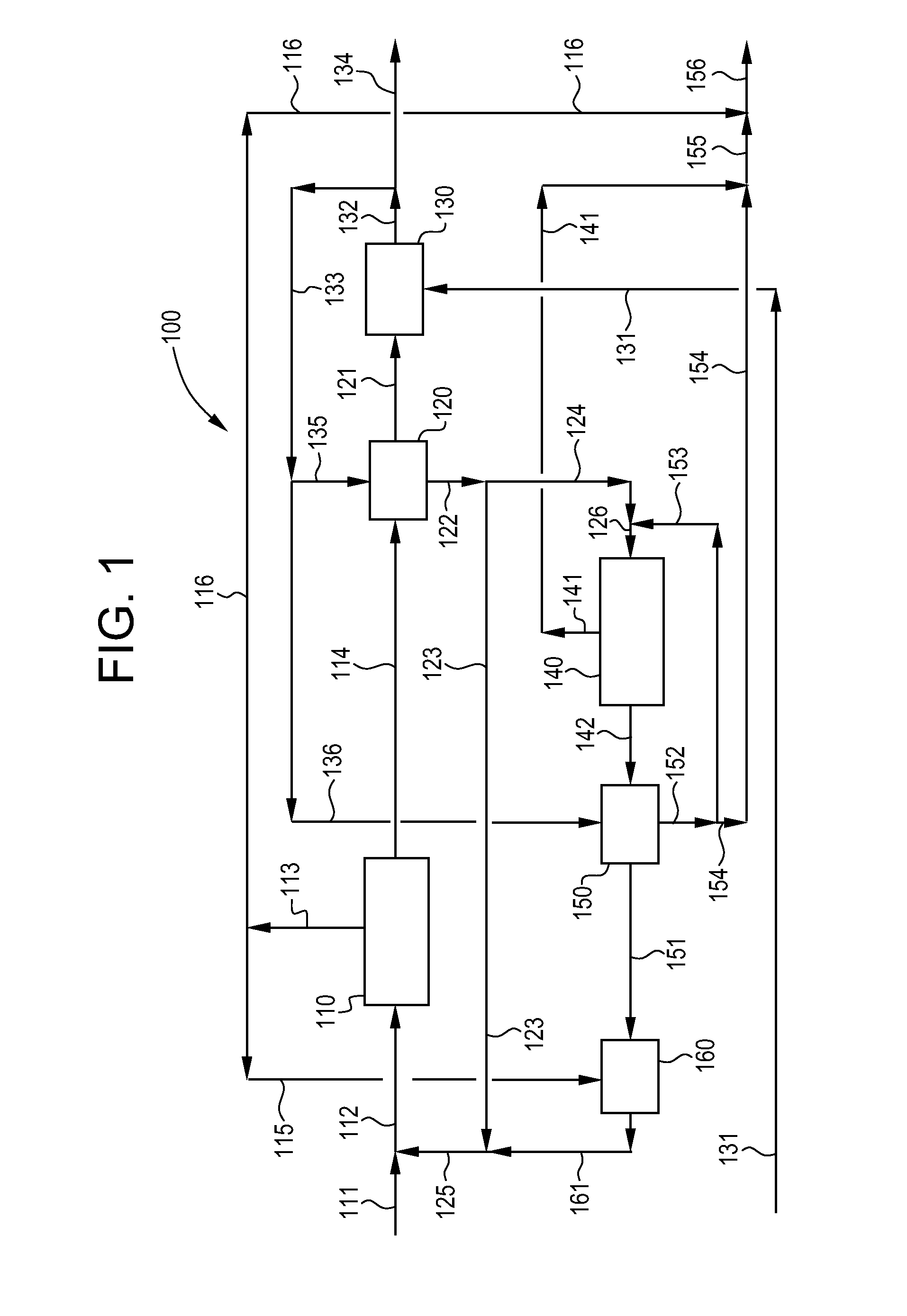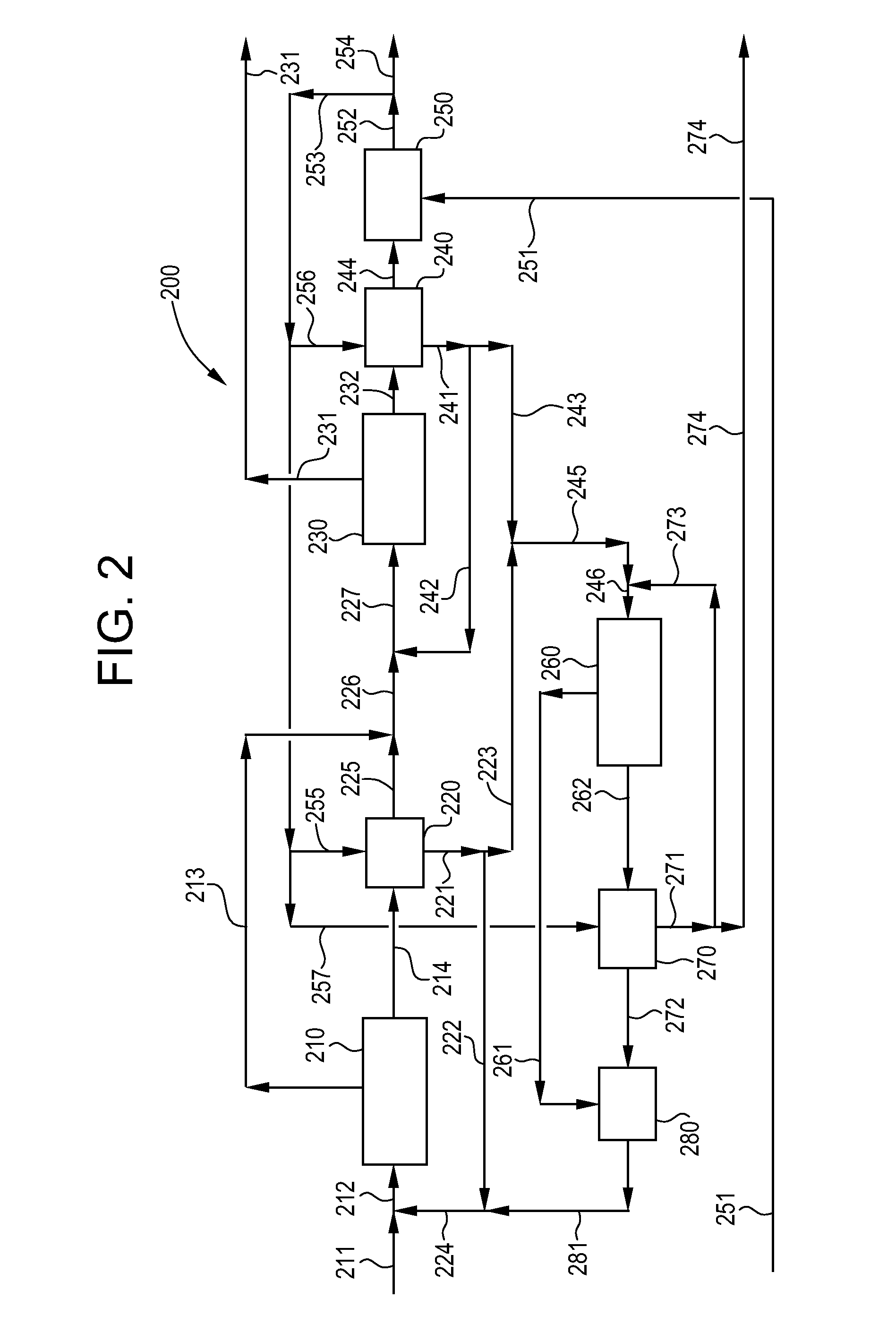Process and apparatus for purification of industrial brine
a technology of industrial brine and purification apparatus, which is applied in the direction of filtration separation, other chemical processes, separation processes, etc., can solve the problems of reducing the availability of chlorine gas or hypochlorite generated by the chlor-alkali process for other industrial processes, the presence of impurities such as organic compounds in such aqueous brine solutions must generally be reduced to a very low concentration, and the need for substantial amounts of chlorine gas or hypochlori
- Summary
- Abstract
- Description
- Claims
- Application Information
AI Technical Summary
Benefits of technology
Problems solved by technology
Method used
Image
Examples
example 1
[0165]In this Example 1, brine purification is carried out according to the present invention via a semi-batch crystallization process.
[0166]Laboratory scale evaporative crystallizer equipment is configured using a 9 liter jacketed round-bottom glass kettle, equipped with a stirrer, a glass draft-tube, heating-mantle controlled by a thermocouple. Hot oil is circulated in the jacketed vessel to help maintain process temperature at approximately 95° C. The heating mantle contributes the additional heat required to boil off the water and concentrate the brine solution to saturation point.
[0167]An initial charge of 2.98 kg of a synthetic brine solution containing of 29.98 weight-percent NaCl, 3.11 weight-percent glycerol, and 66.91 weight-percent water is introduced into the glass kettle of the evaporative crystallizer. The brine solution is heated in the evaporative crystallizer to 110° C. to evaporate the water from the solution. The water vapor is vented, cooled to 15° C. with a chil...
example 2
[0172]In this Example 2 according to the present invention, a semi-batch crystallization process is conducted according to Example 1 with the following exceptions.
[0173]Instead of washing the salt crystals with purified brine containing no glycerol to remove remaining impurities from the crystals, the unwashed salt crystals collected in Example 1 are re-diluted with purified water and re-used as a second start-up brine solution in a second semi-batch crystallization process using the same lab evaporative crystallizer equipment as that used in Example 1. The second start-up brine solution weighs 4.81 kg and contains of 14.80 weight-percent NaCl, 0.038 weight-percent glycerol, and 85.33 weight-percent water.
[0174]The start-up brine solution is heated in the evaporative crystallizer to 110° C. to evaporate the water from the solution. The water vapor is vented, cooled to 15° C. with a chilled-water atmospheric condenser, condensed and collected in a separate vessel. In contrast to Exam...
example 3
[0179]In this Example 3 according to the present invention, a continuous brine purification process is simulated via computer modeling software based on data obtained in Examples 1 and 2 and data generated by the computer model for simulation of continuous processing equipment. The process simulation is based on the process flow diagram shown in FIG. 2 described above. The computer-generated data for each stream identified in FIG. 2 is presented below in Table 8.
TABLE 8Computer-Generated Data Based on Example 3RateTOCGlycerolNaClWaterStream(kg / hour)(ppm)(wt %)(wt %)(wt %)211(1)1.0014500.3717.7081.93214(2)0.96204405.2242.3752.41221(3)0.79247226.3226.7066.98222(4)0.74247226.3226.7066.98223(5)0.06221505.6626.8967.45225(6)0.212000.0597.002.95213(7)0.90500.010.0099.99226(1)0.99790.0219.0380.95232(2)0.9311650.3044.3155.40241(3)0.7614170.3628.4071.24242(4)0.7114170.3628.4071.24243(5)0.0514170.3628.4071.24244(6)0.21220.0197.002.99231(7)0.8980.000.00100.00251(8)0.8400.000.00100.00255(9)0.043...
PUM
| Property | Measurement | Unit |
|---|---|---|
| pressure | aaaaa | aaaaa |
| pressure | aaaaa | aaaaa |
| temperature | aaaaa | aaaaa |
Abstract
Description
Claims
Application Information
 Login to View More
Login to View More - R&D
- Intellectual Property
- Life Sciences
- Materials
- Tech Scout
- Unparalleled Data Quality
- Higher Quality Content
- 60% Fewer Hallucinations
Browse by: Latest US Patents, China's latest patents, Technical Efficacy Thesaurus, Application Domain, Technology Topic, Popular Technical Reports.
© 2025 PatSnap. All rights reserved.Legal|Privacy policy|Modern Slavery Act Transparency Statement|Sitemap|About US| Contact US: help@patsnap.com



